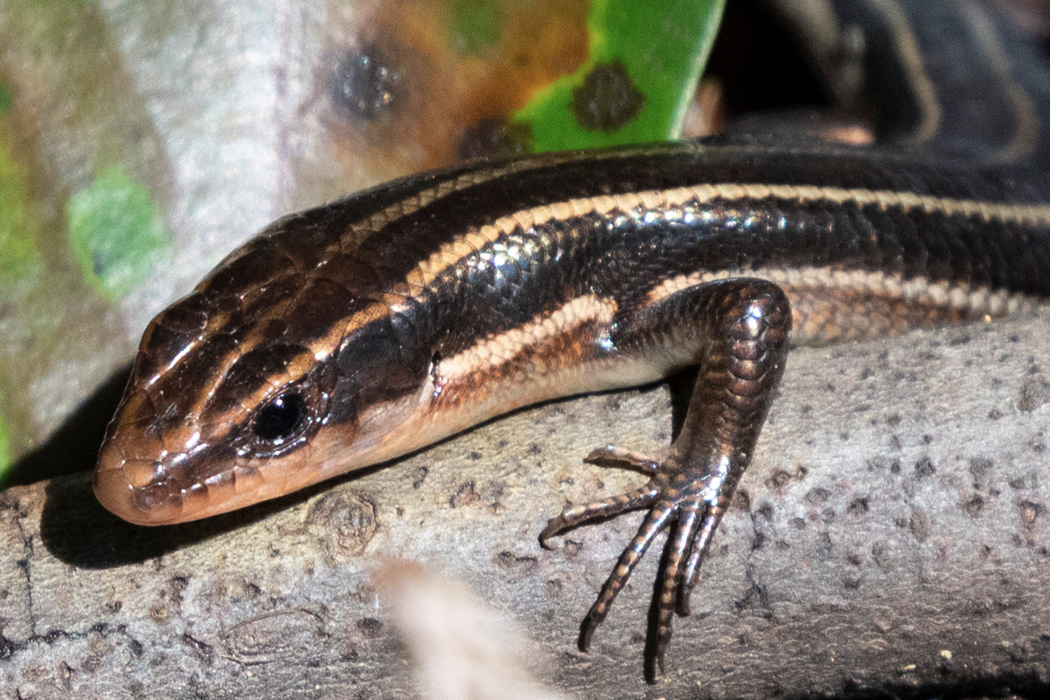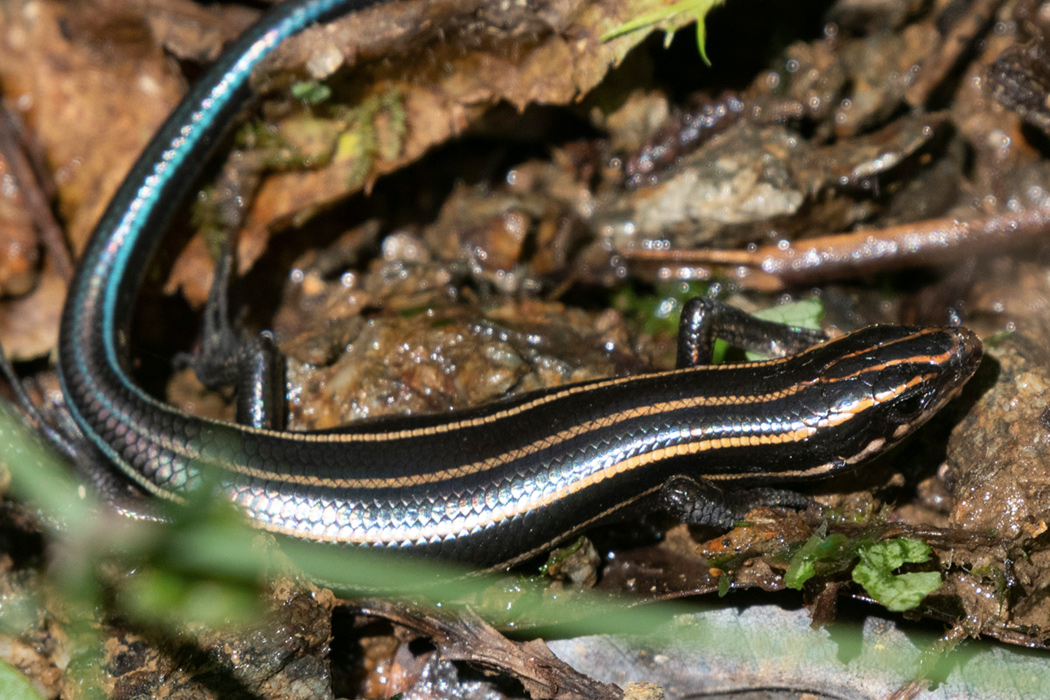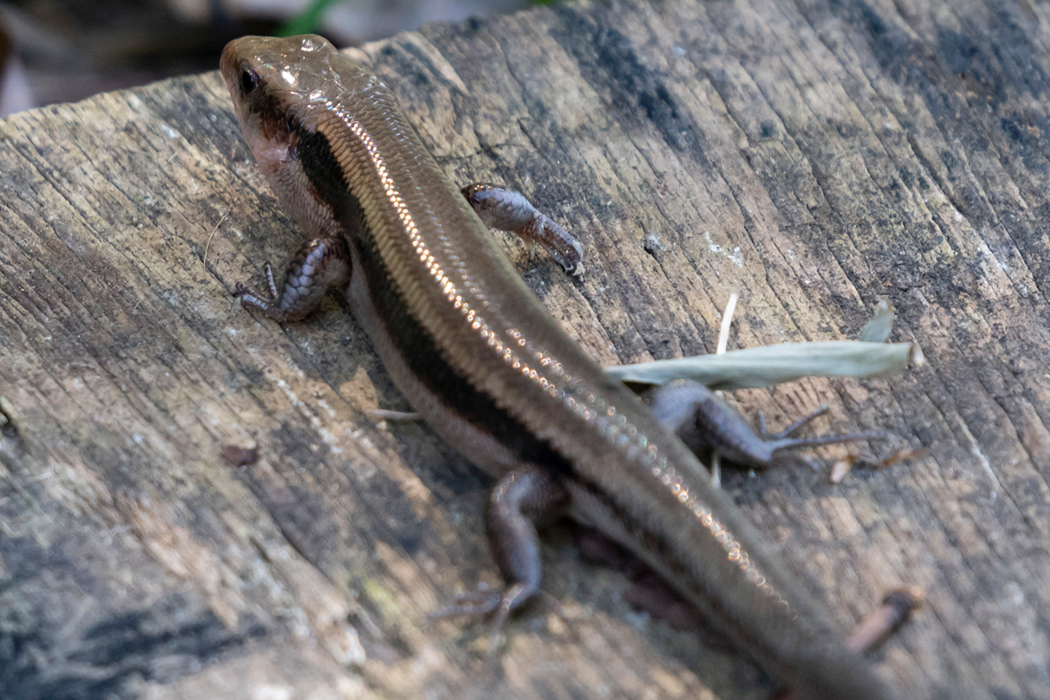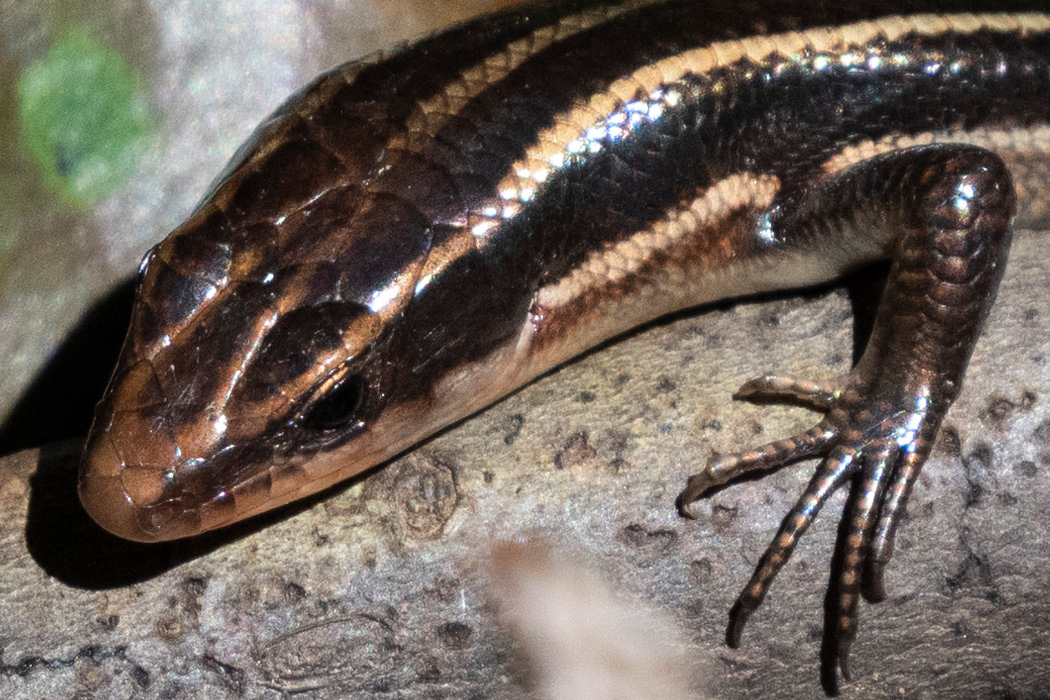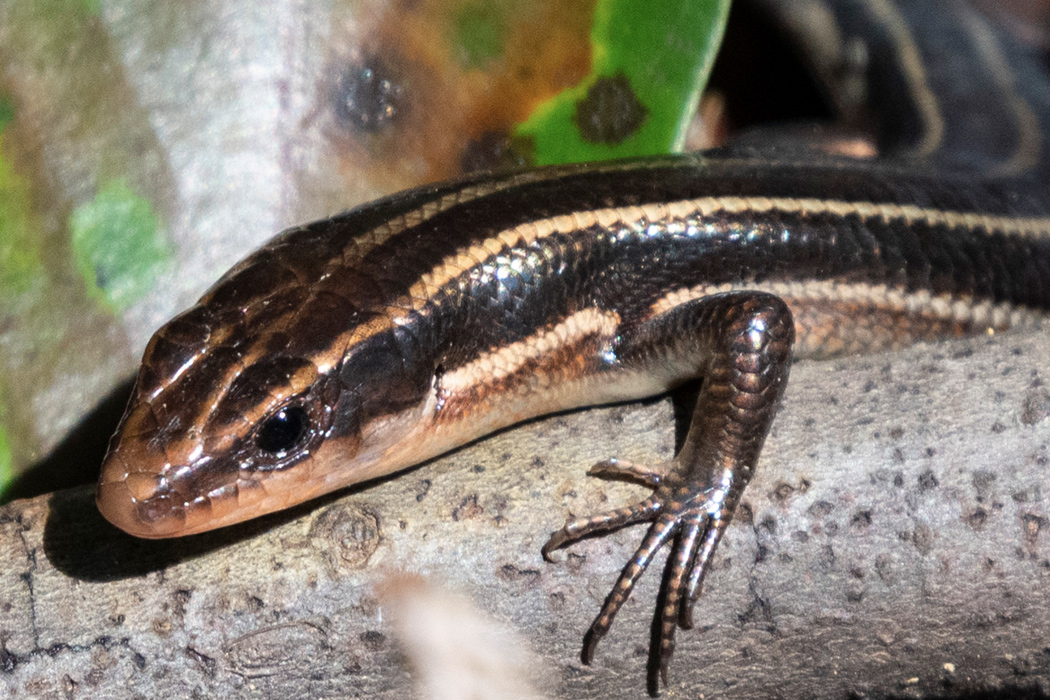
Far Eastern Skink
Became a different species from Japanese lizard (Plestiodon japonicus).
| Scientific name | Plestiodon finitimus |
| English name | Far Eastern Skink |
| Japanese name | 東日本蜥蜴 |
| Classification | Reptilia |
| Classification details | Squamata Scincidae |
| Full length | about 20cm. |
| Distribution | Distributed from eastern Japan to Hokkaido. |
Characteristics
Juveniles and adults have different body colors. Adults have a dark brown line running along the sides of their brown bodies. During the breeding season, males are reddish from the cheeks to the belly. Juveniles are dark brown with five light brown vertical stripes running from head to tail. The tail has a metallic blue color. The whole body is shiny and looks slimy, but when you touch it, it's not. The belly is soft, and the area between the front and hind legs appears swollen. It looks almost the same as the Japanese lizard that inhabits western Japan, but it is a different species with different genes.
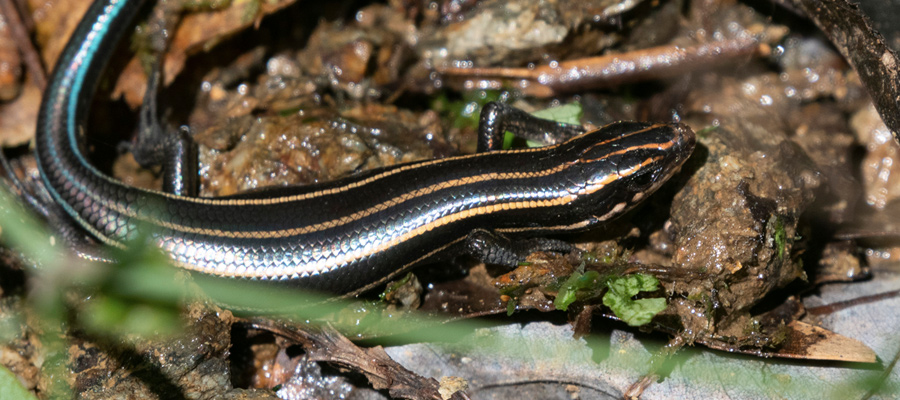
Ecology
They come out in sunny places, from the mountains to the gardens of people's houses. It preys on animals such as insects and earthworms. It is targeted by various animals such as cats and birds. When it senses danger, it cuts off its tail to save its life. The cut tail moves for a while to attract the attention of predators. The tail regenerates, but the bone does not grow back.
Habitat
I photographed juveniles emerging in the sun in Hachioji City. They are rather cautious, so if they are too close, they will quickly run away under the leaves.
When I was a child, there was a capture point for the Eastern Japanese lizard under a sunny planter on the way to school, and I often caught it. He pushed a planter with his foot and escaped, but a few friends surrounded him and caught him. It's pretty quick, so if you don't move fairly quickly, you'll escape. I remember feeling kind of sorry when the tail was cut off when I caught it.
Pictures
Introducing a picture of Far Eastern Skink.
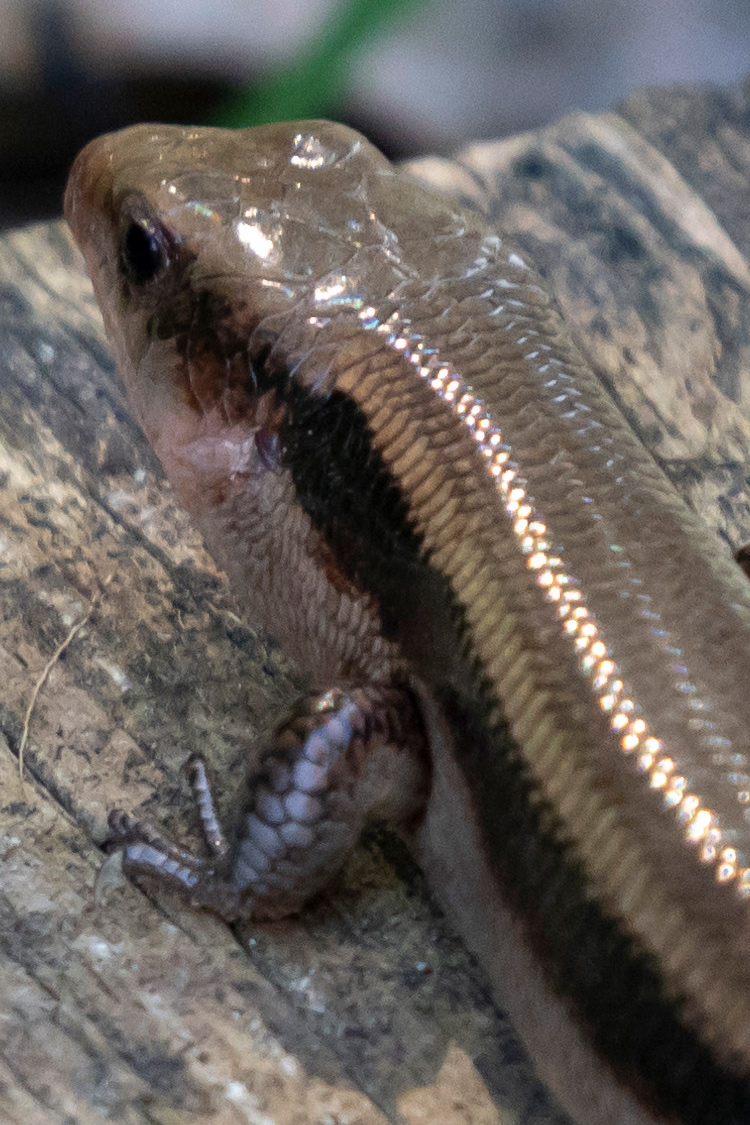
Picture book

Speckled damselfish
beautiful juvenile orange and blue fish......ead more.
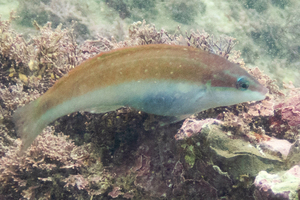
Motleystripe rainbowfish
changes sex from female to male.......ead more.
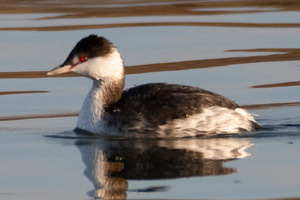
Horned Grebe
A head with clearly separated black and white.......ead more.

Japanese Green Woodpecker
Endemic to Japan. The bark is like a whistle.......ead more.

Japanese rhinoceros beetle
Throw away with great strength and big horns.......ead more.
